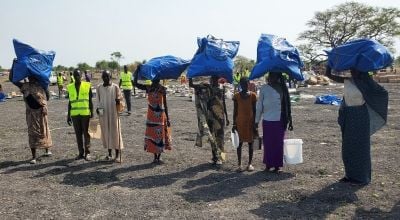
Read our 2024 annual report

Knowledge Hub
One out of every 11 people go hungry each day — but why? Learn about the top causes of world hunger, and what we're doing to solve them.
The last five years of fighting hunger have been difficult. After years of improvement, the numbers started to reverse course beginning in 2020, owing to a fatal combination of the COVID-19 pandemic, rising conflict, and consecutive climate emergencies (especially droughts).
These are three key causes of world hunger, but they’re not the whole story. Updated for 2025, these are the 10 largest contributing factors to our global food security crisis — and what we at Concern are doing to address them.
1. Poverty
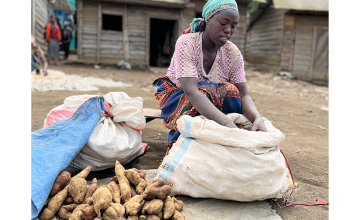
Poverty and hunger go hand in hand. Families experiencing poverty usually can’t afford enough food for everyone to eat. If they can, it’s often not food that provides the full range of vitamins and nutrients that people need every day to thrive.
This undernourishment can lead to an intergenerational cycle of poverty. Children who don’t get enough food have greater difficulties focusing in school, which can hinder their chances of getting a complete education and higher-paying job than their parents. Parents who skip meals to make their food stretch may also struggle with work, limiting their earning potential. It’s a vicious cycle.
We can see the link between poverty and hunger play out at the macro level as well: The Democratic Republic of the Congo is one of the world’s poorest countries. Last year, nearly 75% of the country’s residents lived below the poverty line. Earlier this year, the Integrated Food Security Phase Classification (IPC) estimated that 68% of the country are also living with some degree of food insecurity.
2. Food shortages

Sometimes it’s not even an issue of funds, but one of supplies. In low-income farming communities, families often experience periods before harvests known as hunger seasons. These are the times of year when food supplies from the previous harvest are used up, but the next harvest is still a ways off. This leaves families forced to skip one (or more) meals each day in the period before the next harvest, which could be months away.
We’ve also seen food shortages increase in the last few years in certain countries following both the COVID-19 pandemic and the crisis in Ukraine. Border closures and trade route interruptions have prevented critical supplies from getting where they’re needed most.
3. War and conflict
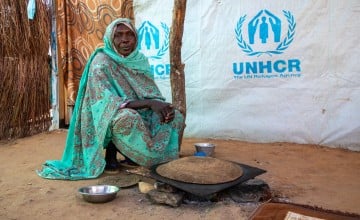
Conflict and hunger form another vicious cycle, both for countries experiencing active conflict and even for those that aren’t. For countries in conflict, violence can lead to the destruction of farmlands, displacement, and people sheltering at home for their own safety. Conflict also leads to high inflation rates that make food available at the market unaffordable for many civilians.
International conflicts also carry a large impact. Pre-war, Ukraine and Russia exported 25% of the world’s wheat supplies. Malawi (which has enjoyed relative peace for the last three decades) is one of many countries that has historically relied on this region — located more than 5,000 miles away — for key staples. Conflict has interrupted those supply chains and also contributed to global inflation rates, leaving millions of people without a key lifeline.
4. Climate change
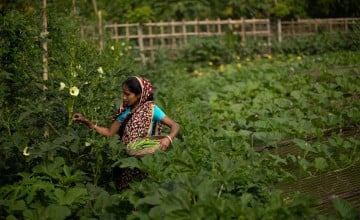
Natural disasters and the overall climate crisis are also major causes of hunger, with each event (big or small) setting the most vulnerable people and communities further and further back. As we’ve seen in recent years, climate shocks have also become more frequent and more destructive as a result of global warming.
Extreme climate patterns also tend to have a higher effect on low-income areas of the world. The World Bank estimates that the climate crisis has the power to push more than 100 million people into poverty over the next decade, which in turn will have a direct impact on hunger rates.
5. Poor nutrition

Families living in poverty often rely on just one or two staple foods, like corn or wheat, for the majority of their meals. As a result, they don’t get enough critical macronutrients and vitamins. Even if they feel full, they may still be suffering the effects of hidden hunger.
Nutrition is especially key for child development during the first 1,000 days between being in the womb and their second birthday. If a child suffers chronic malnutrition during this time, they may face a lifetime of health and developmental issues. Likewise, nutrition is also important for maternal health. Mothers-to-be need even more vitamins and minerals in order to deliver a healthy newborn.
6. Poor public policy and political instability
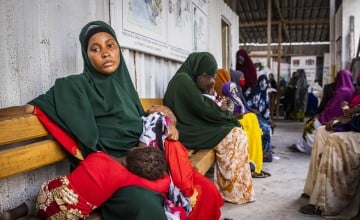
Systemic problems, like poor infrastructure or low investment in agriculture, often prevent food and water from reaching the populations that need them the most. This is especially true in fragile contexts, which is why many of the hungriest countries in the world are also experiencing some form of political instability.
If resources are limited, leaders may focus them on the most pressing emergencies. Unfortunately, hunger is often a silent crisis in these cases. With decades of crisis in Somalia for example, the recent Horn of Africa drought carried an even larger impact on millions who faced hunger as a result. The issue wasn’t just failed crops or drought-related displacement, but a much larger contextual problem.
7. Economic downturns
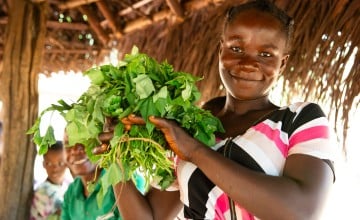
After two civil wars and the 2014-16 Ebola outbreak, Liberia’s economy was left weakened by back-to-back crises. Nearly a decade after the end of the Ebola epidemic, half of all Liberians still live below the poverty line. It also often ranks among the hungriest countries on the Global Hunger Index.
Inflation as the result of a bad economy means that, even if food is available and people have jobs, they may not be able to afford even the most basic staples. Last year, for example, the cost of an emergency food basket rose by 66% in Ethiopia.
8. Food waste
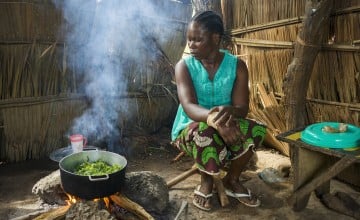
According to the World Food Programme, over 1 billion tonnes of food produced is never consumed. That’s equivalent to us throwing out one-third of the global food supply every year. What’s more, producing this wasted food also uses other natural resources that, when threatened, have a ripple effect in the countries that are already hit hardest by hunger, poverty, and climate change. Producing this wasted food requires an amount of water equal to the annual flow of Russia’s Volga River, and nearly 3 billion tonnes of greenhouse gases to the atmosphere.
9. Gender inequality

The UN notes that if female farmers had the same access to resources as their male counterparts, the number of hungry people in the world could be reduced by up to 150 million. Female farmers are responsible for growing, harvesting, preparing, and selling the majority of food in low-income countries. Women are on the frontlines of the fight against hunger, yet they are frequently underrepresented at the forums where important decisions on policy and resources are made.
10. Forced migration
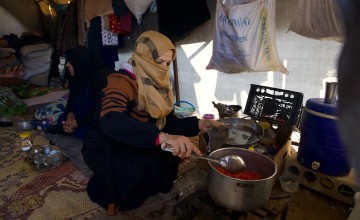
Hunger can be a cause of forced migration. Forced migration can also be a cause of hunger. Refugees and internally-displaced people living in displacement camps or informal communities are often legally or linguistically prevented from getting work to support their families while away from home (many refugees are also women and children, which means their options are even more limited).
Many refugees live in neighbouring countries, countries with limited resources to begin with. Some of the hungriest countries in the world are also among the largest host communities or have high rates of internal displacement. Emergency food assistance helps, but the problem of hunger and migration can only be resolved with a political solution.
How Concern addresses the causes of world hunger
From Afghanistan to Yemen, Concern’s Health and Nutrition programmes are designed to address the specific, intersectional causes of hunger and malnutrition in each specific context. Our projects often combine two or more of the following areas of focus: agriculture and climate response, maternal and child health, education, livelihoods, and water, sanitation, and hygiene (WASH).
We played a key role in developing Community Management of Acute Malnutrition (CMAM), which has been recognised by the World Food Programme as the gold standard for treating malnutrition. Other recent successes, like Lifesaving Education and Assistance to Farmers (LEAF), have seen entire communities not needing emergency food assistance for the first time in decades due to holistic and systemic shifts in agricultural practices and community care.
Last year alone, Concern reached 5 million people with health and nutrition programmes in 16 countries. Your support can help us to do even more in the year ahead.
Our impact in 2024
people reached through our emergency response
people reached through our health interventions
people reached through our livelihoods programmes


